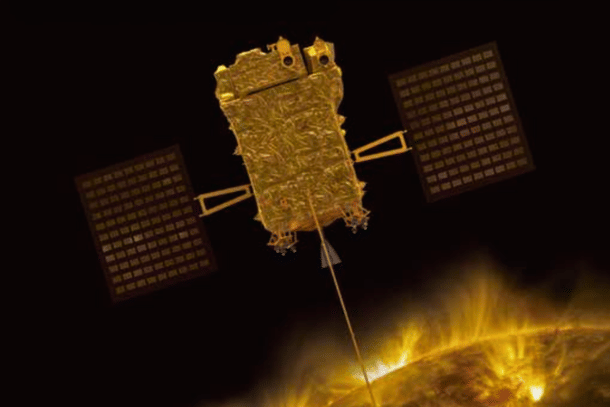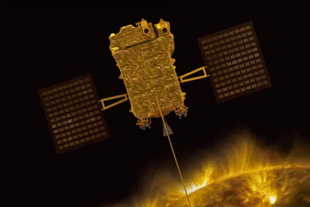Science
Aditya-L1, First Indian Space Mission To Study The Sun, Begins Its 125-Day Journey To Sun-Earth L1 Point
Swarajya Staff
Sep 02, 2023, 01:17 PM | Updated 01:17 PM IST
Save & read from anywhere!
Bookmark stories for easy access on any device or the Swarajya app.


After the success of the Chandrayaan-3 mission, the Indian Space Research Organisation (ISRO) on Saturday (2 September) successfully launched the Aditya-L1, India's first space mission to study the Sun.
The spacecraft was launched onboard ISRO's PSLV-C57 rocket at around 11.50 am today (2 September) from Sriharikota in Andhra Pradesh.
Nearly 63 minutes after the liftoff of the PSLV, the satellite separated from the upper stage of rocket at around 12.53 pm.
The PSLV rocket put the Aditya-L1 spacecraft in a highly eccentric Earth bound orbit.
PSLV-C57/Aditya-L1 Mission:
— ISRO (@isro) September 2, 2023
The launch of Aditya-L1 by PSLV-C57 is accomplished successfully.
The vehicle has placed the satellite precisely into its intended orbit.
Indiaâs first solar observatory has begun its journey to the destination of Sun-Earth L1 point.
The spacecraft will then perform orbital maneuvers by using its Liquid Apogee Motor (LAM) to reach Sun-Earth Lagrange point L1 (1.5 million kilometers from Earth, in a halo orbit).
Aditya-L1 will take 125 days to cover the distance to the Sun-Earth L1 point.
The placement of Aditya-L1 at the L1 Lagrange point ensures a constant and uninterrupted view of the Sun. This strategic location allows the satellite to observe solar radiation and magnetic storms before they are influenced by Earth's magnetic field and atmosphere.
Furthermore, the gravitational stability of the L1 point minimizes the need for frequent orbital maintenance, optimizing the operational efficiency of the satellite.
The scientific objectives of Aditya-L1 mission includes, study of coronal heating, solar wind acceleration, Coronal Mass Ejections (CME),dynamics of solar atmosphere and temperature anisotropy.
The spacecraft carries seven scientific payloads for systematic study of the Sun. All payloads are indigenously developed in collaboration with various ISRO Centres and Scientific Institutes, the ISRO said.
The main science payloads of the spacecraft include the Visible Emission Line Coronagraph (VELC), which is used for corona imaging and spectroscopy studies, and the Solar Ultraviolet Imaging Telescope (SUIT), which is used for narrow and broadband imaging of the photosphere and chromosphere.
The other instruments on board are the Solar Low Energy X-ray Spectrometer (SoLEXS), which is used for soft X-ray spectrometry and observing the Sun as a star; the High Energy L1 Orbiting X-ray Spectrometer (HEL1OS), which is used for hard X-ray spectrometry and observing the Sun as a star; the Aditya Solar wind Particle Experiment (ASPEX), which studies the solar wind; the Plasma Analyser Package for Aditya (PAPA), which analyzes particles in the solar wind; and the Advanced Tri-axial High Resolution Digital Magnetometers, which are used for in-situ magnetic field studies.





